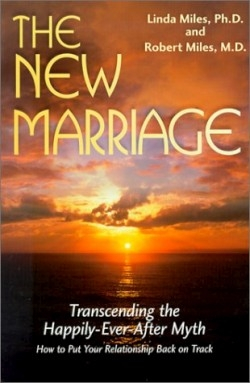The New Marriage
Transcending the Happily-Ever-After Myth
Where does a person turn for help when their marriage becomes derailed? The authors/psychologists of this book provide an introduction in layman’s terms to moving along the passage from the Mountain of Innocence (the newlywed couple) to the Mountain of Transformation (mature partners in a strong, marriage relationship). The married, but derailed partners should have the goal of restoring what has been lost from their beginning at the altar or what has been misdirected from ignoring the warning signals posted along the track.
Throughout each case study the partners’ problems are analyzed to find the underlying problems. These principles are isolated through dialogue, and solutions are applied to contemporary life situations. “We believe that a true marriage is a mystical union that requires much practice and preparation to survive in the modern world,” and “in this book, we combine the practical and the mystical to provide a map for a happy, long-term relationship.”
The mystical aspect is not Biblical, but poetical, with poems by William Blake (1757-1827) and others. Included are self-discovery projects, transformation exercises, and a brief reference to using The Eneagram, which is a tool for identifying problems.
The smooth flow of text offers a subject index for guidance, and, for further study, a substantial bibliography of related books explain the technical aspects for the lay reader.
Considerable help for those whose marriage might be less than ideal is presented in this book. The authors’ advise transcending partners to: “Live in His [God’s] love, enter His joy and abide in His peace.”
Reviewed by
Jack L. Ralston
Disclosure: This article is not an endorsement, but a review. The publisher of this book provided free copies of the book to have their book reviewed by a professional reviewer. No fee was paid by the publisher for this review. Foreword Reviews only recommends books that we love. Foreword Magazine, Inc. is disclosing this in accordance with the Federal Trade Commission’s 16 CFR, Part 255.

